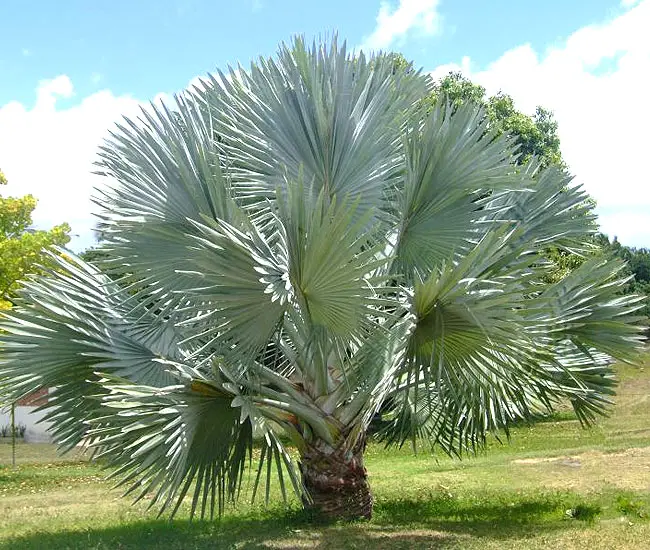
The Bismarck Palm Tree, scientifically known as Bismarckia nobilis, is highly coveted among fan palms in Florida. Originating from the island of Madagascar, off the east coast of Africa, this palm species was introduced relatively recently to Florida landscapes.
Its sheer size and striking appearance make it a dramatic addition to any landscape, whether as a focal point or for providing shade and screening.
Notably, the Bismarck Palm is well-suited to various climates, including regions with cold temperatures down to 25°F. It can thrive in states such as Alabama, Arizona, California, Louisiana, Mississippi, Nevada, Oregon, and Texas.
Quick Facts:
| Scientific name: | Bismarckia nobilis |
| Common names: | The Bismarck Palm is also known as Bismark Palm, Bismarckia Palm, Nobilis Palm. |
| Origin: | The Bismarck Palm is native to the island of Madagascar which is off the east coast of Africa. |
| Growth Rate: | Slow to Moderate |
| Cold Tolerance: | USDA Zones 9b (25 – 30 F) to 11 (above 40 F) |
| Light Req: | Partial sun to full sun |
| Water Req: | High drought tolerant |
| Soil Req: | Widely adaptable |
| Fruit: | Brown. Not edible. |
| Propagation: | Seeds, often germinating in less than 2 months |
Bismarck Palm Appearance
This magnificent palm features a single, smooth trunk crowned with 20-25 wide fronds, forming an impressive spherical crown. In its younger stages, the Bismarck Palm exhibits a grey trunk covered with old leaf bases, which gradually becomes smoother with maturity.
The palm’s striking palmate leaves are supported by sturdy stems measuring 8-10 feet in length and 10 inches in diameter, adorned with small, sharp teeth. The leaves themselves are an enchanting silver-green color and can span an impressive 10 feet across.
Flowers and Fruits of the Bismarck Palm
During late spring, the Bismarck Palm produces small, fragrant flowers. This dioecious palm features male and female flowers on separate plants.
Cream-colored flowers emerge in clusters on 3-foot-long stalks, bending under the weight of the developing fruit. Following the flowering stage, the palm yields small, non-edible blue fruits with oblong shapes, measuring about 1/2 to 1 inch in diameter.
These fruits are not edible for humans and are primarily ornamental in nature. They add a decorative element to the palm tree during the fruiting season.
Caring for the Bismarck Palm
In cultivation, the Bismarck Palm can reach heights of 30-50 feet and widths of 20 feet, although in its natural habitat, it may attain heights of up to 70 feet. This palm exhibits rapid growth, capable of reaching heights of 3 to 15 feet in just five years.
Gardeners seeking a low-maintenance palm tree will find the Bismarck Palm to be a suitable choice. Proper care involves applying a high-quality palm fertilizer with a continuous-release formula twice a year during the growing season.
The Bismarck Palm demonstrates exceptional cold hardiness, tolerating temperatures as low as 25°F when mature, and it can even survive brief exposure to 22°F without permanent damage. It is well-suited for planting in USDA hardiness zones 9b (25 – 30°F) through 11 (above 40°F).
This adaptable palm thrives in full sun but can also tolerate some shade. Additionally, it is relatively trouble-free, making it an attractive choice for landscaping projects.
Bismarck Palm Pictures
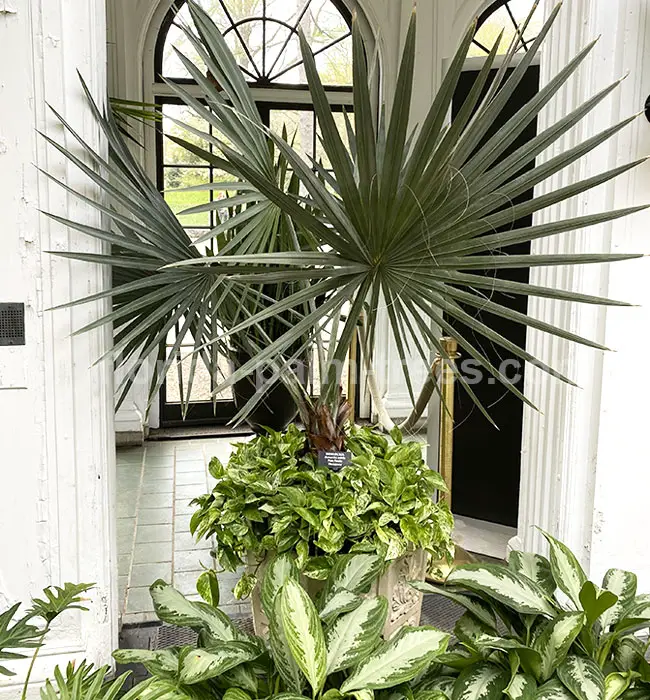
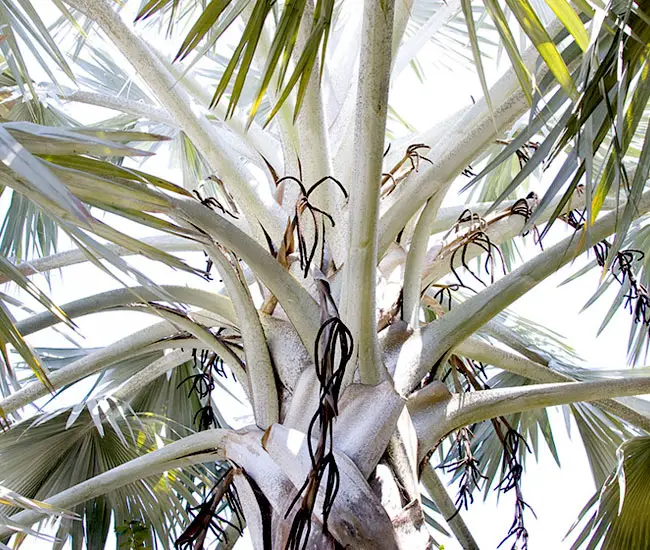
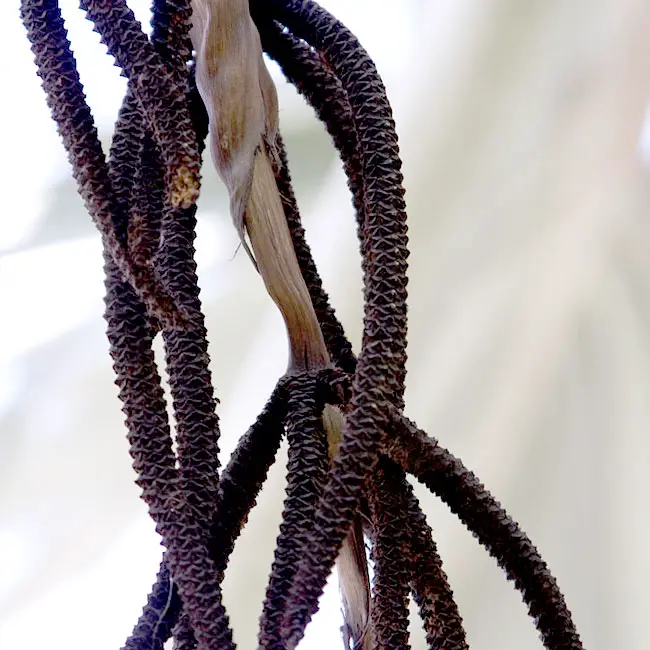
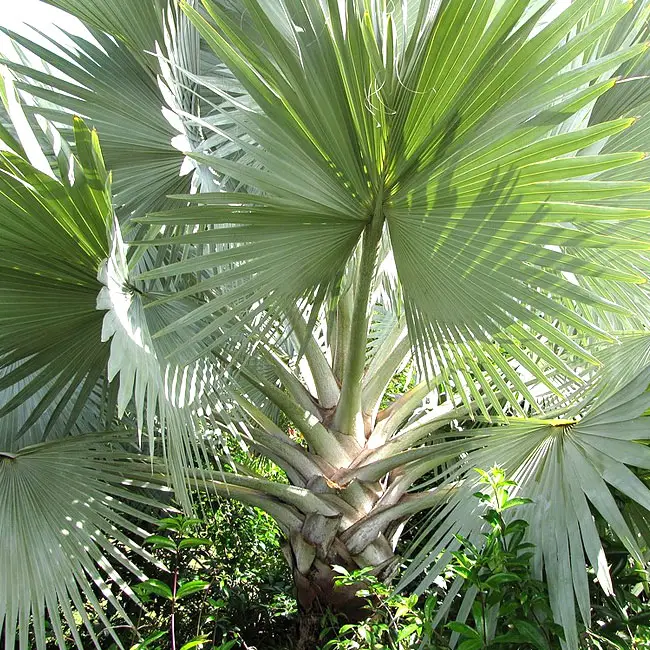
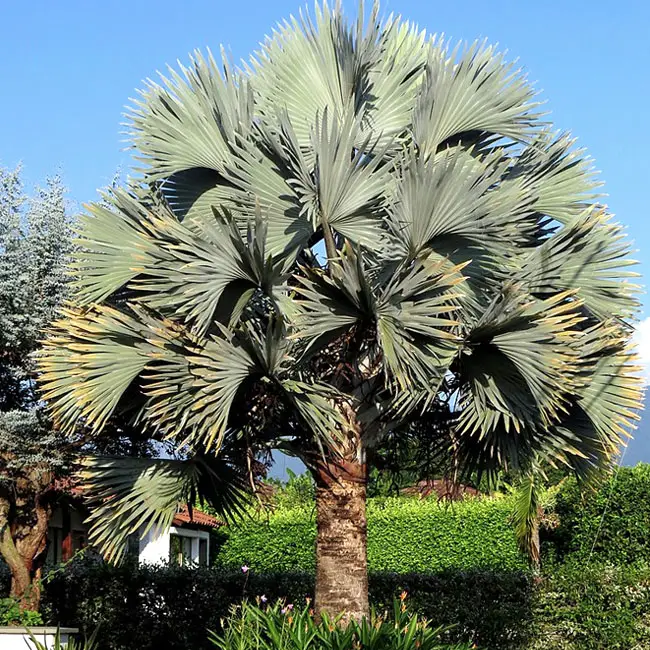
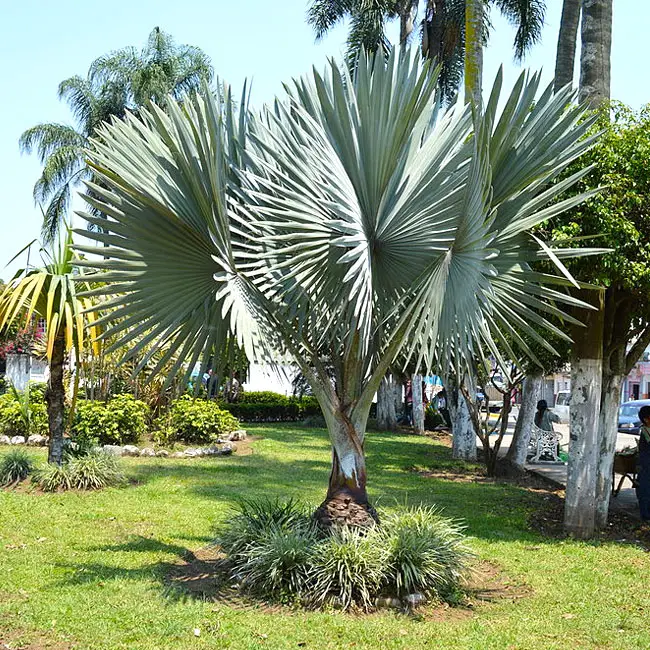
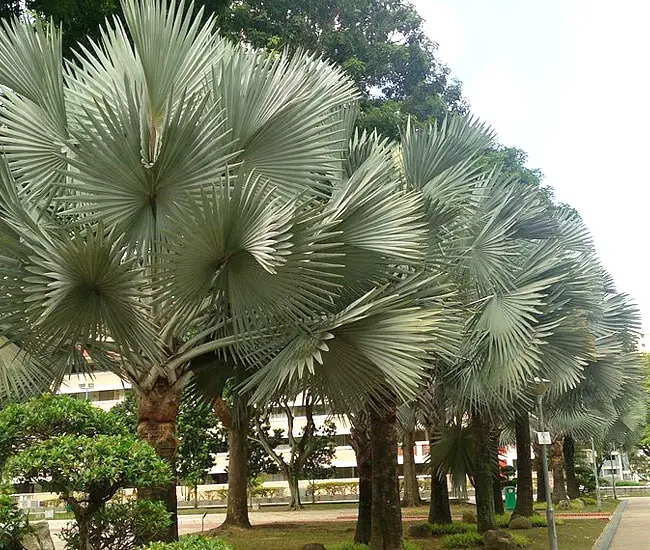
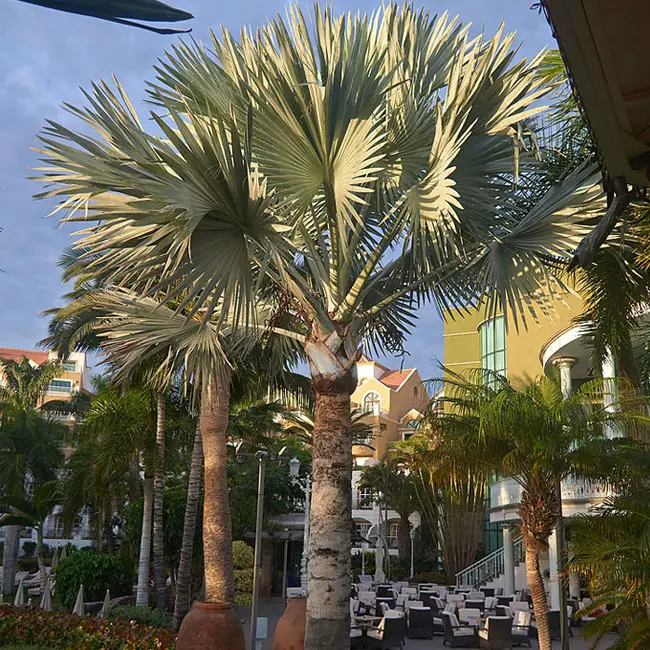
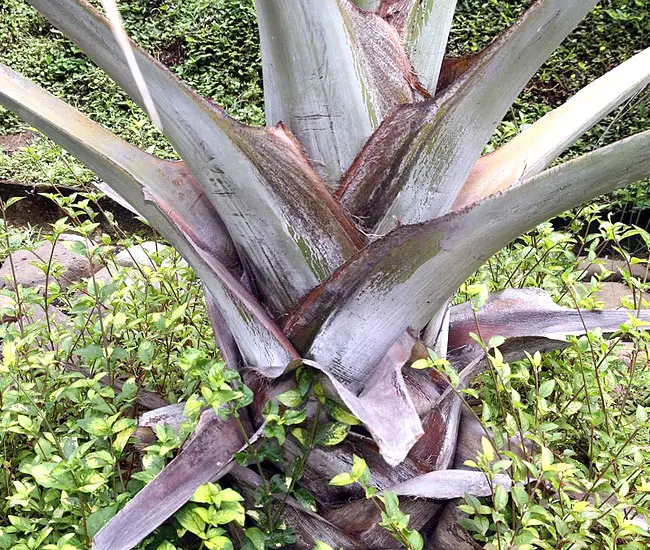
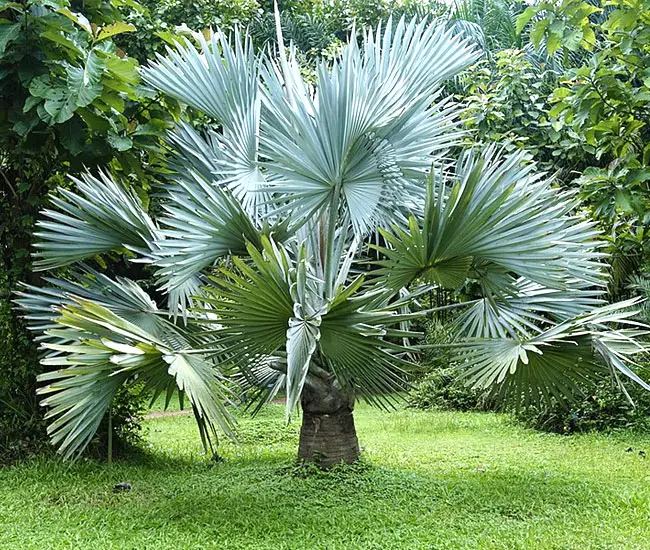
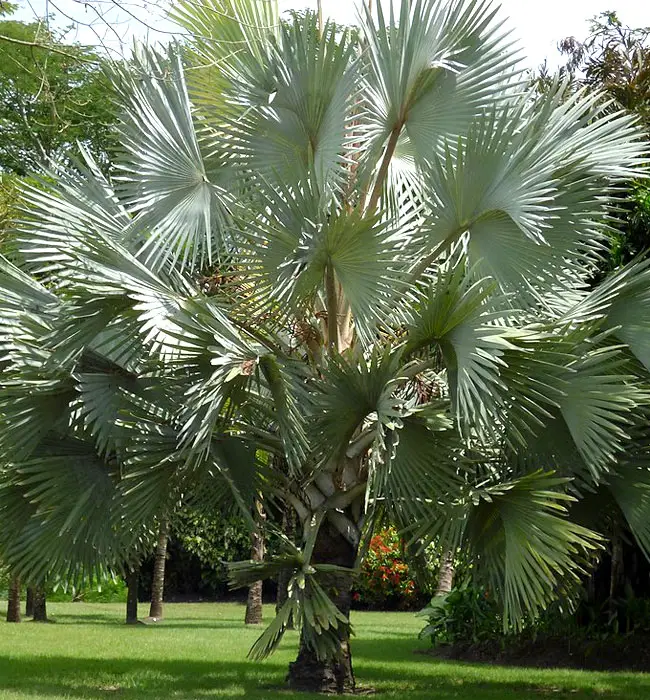
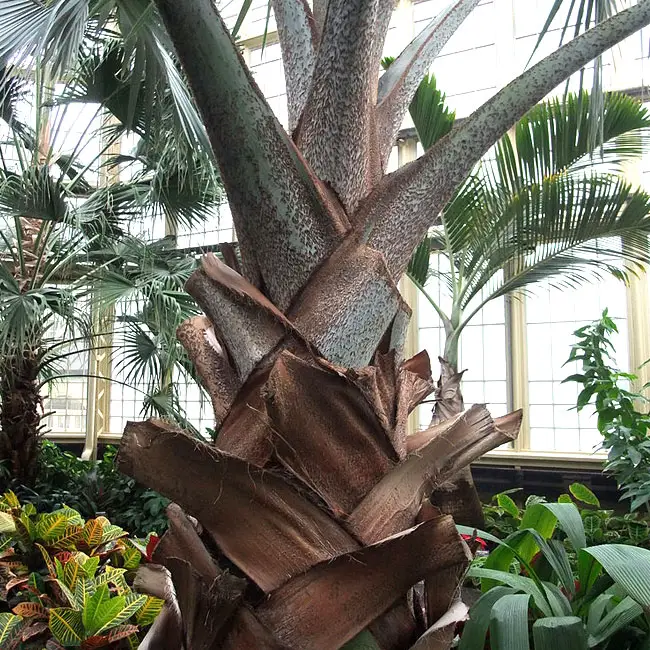
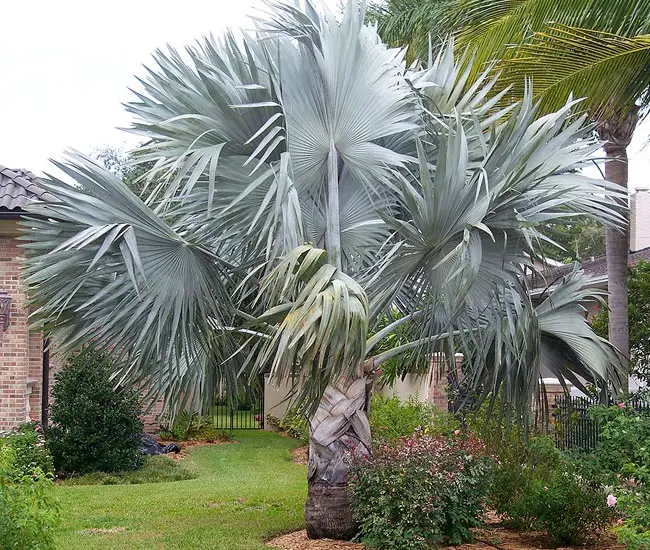
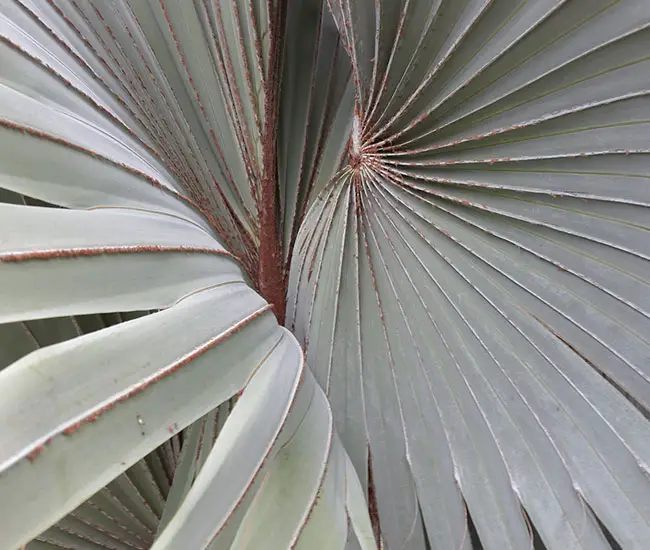
More information can be found on EDIS and Floridata sites.

We had so much rain on the texas coast and hard winds that our tree has blown over. I have tried staking it with rope and stakes but the leaves are so big that they catch all the wind and keep blowing over again. Question—does anyone know the best way to stake this tree. The base is still so short that clamping 2×4’s on it and then running a 2×4 to a stake will not work. What will happen to the tree if I cut a bunch of fronds off to help the tree not move asmuch and allow the roots to get grow more? We are lost as to what the heck to do. Please help___
My tree was up-rooted in a Hurricanes winds, I was afraid of disturbing the roots but I secured the tree the best I could & the tree survived & re-grew the disturbed roots without any problem. Good Luck, -Pat
We have the same problem Stan and I’m searching for an answer.
These palms were planted in the landscape bed right next to the house in my neighborhood. The palm is now ridiculuosly tall an impossible to remove dead frawns without paying someone. I am really wanting to have it removed because I’m terrified its going to blow over on to my house. What kind of wind can these palms handle? In my opinion this palm species was a very bad choice to put right next to the house. I really don’t want a tree that can potentially reach 70 feet next to my house.
Once a bismark is planted, 90% chance of it dying if you replant it. The roots don’t take to being touched once in the ground. They will be like a camels leg or thicker. I have ten. 3 were bought grown in canvas, weighed 1500# at time of planting. They took 200 gallons each on first day. 50 gallons a day for a week. Then, about 5 to 10 every other day for 3 months. After 6 months the roots should hold the palm during a hard tropical storm (70 mph). No stakes required. I planted 7 from Home Depot, in 2012 and they are almost as big as the ones I had installed. The hole should have been dug deep as possible, using same earth to cover ball and 2″ of trunk
What kind of rootball does a palm have…?? I’m looking at a small Bismarkia palm, and want to plant in a bowl about 10″ deep – just for the summer…..
Will this bee deep enough….??
What about water??
what if you put blanket over the palm and tie the blanket to rebar or something. it just a thought
Stan, We live in Florida and it’s fairly windy. Our Bismark is staked with rebar and rope. There are Bismarks all over down here and the wind doesn’t seem to be a problem. I do know that it’s important to get the roots seated well when you initially plant it and water deep every day for two weeks to allow the roots to take. Water all around the tree, otherwise the roots can die on one side.
We have 2 large Bismarck Palms in our front yard that we have had for about 15 years. Yesterday we noticed on one of the trees that all the fonds have collapsed and there is a strong odor. Do you know what is wrong and what we should do? The other tree is fine
Seeds in my bismark palm. Am I suppose ti loose some seeds at an early stage..small ones falling off. Also how do I germinatevthese seeds, when do I pick them????
I’ve been involved in moving many large (20′-30′ overall ht) Bismarck palms in Miami. They were root pruned as you would any tree with a fair sized rootball. The key was that all the fronds were hurricane cut like Sabal palms – we did not have any losses. It took a while for the heads to fill out again, but it was well worth it!
I have a 12 ft. Bismarck that needs to be removed, because of a hurricane. How big is the ball of my free? I need to plant so.ething else and I need the stu.p removed
We have a couple of these trees and they have big ants in them. Does anyone know what we can use to get rid of these ants?
How do you trim a fan palm or prevent it from growing taller? Ours is almost to roof and don’t want it any bigger!